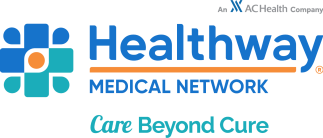Addiction is a treatable chronic medical disease that affects individuals through complex interactions between brain circuits, genetics, the environment, and personal experiences. Despite the harmful consequences, people with addiction often engage in compulsive substance use or behaviors. Healthway Medical Network, in its recent webinar on “Drug-Free & Alcohol-Free Workplace,” shed light on the impact of addiction, the prevalence of substance abuse in the Philippines, and the importance of prevention and treatment approaches.
The Prevalence of Substance Abuse
According to the World Health Organization, psychoactive substances are those that, when taken or administered, affect mental processes such as perception, consciousness, cognition, mood, and emotions. In the Philippines, statistics show that 6 out of 100 Filipinos have tried dangerous drugs at least once, while 2 out of 100 currently use them. Furthermore, the total per capita alcohol consumption in 2016 was 25.5 liters per year for males, 9.1 liters per year for females, and 19.9 liters per year for both sexes aged 15 and above.
The Impact of Alcohol and Drug Use in the Workplace
The webinar highlighted the negative consequences of alcohol and drug use. These consequences include increased absenteeism, a higher risk of accidents, higher turnover rates, decreased job satisfaction, and other behavioral issues such as theft, vandalism, and disruptive behavior. Recognizing these effects is crucial for creating a safe and productive work environment.
Understanding Drug Dependency
It also explained the Dopamine Theory of Addiction, which revolves around the dopamine reward pathway. This theory states that dopamine release mediates reward and thus leads to addiction. This theory helps us understand how addiction develops and progresses. Additionally, the Koob and Le Moal Addiction Cycle (2008) was discussed, highlighting the stages of addiction, including binging, intoxication, tolerance, withdrawal, negative affect, and preoccupation.
Commonly Abused Substances
The webinar outlined several substances that are commonly abused. These include alcohol, cannabis, methamphetamine, volatile solvents, opioids, and benzodiazepines. Each of these substances has been linked to changes in behavior, physical health, mental health, and potentially long-term addiction. Additionally, they can have a detrimental effect on social relationships and functioning in the workplace productivity.
Effects of Common Substances
The webinar delved into the effects of alcohol, cannabis, methamphetamines/amphetamines, volatile solvents, opioids, and benzodiazepines. These effects range from difficulty focusing and memory problems (alcohol) to decreased alertness and psychomotor impairment (cannabis) and intense euphoria and hallucinations (methamphetamines/amphetamines).
Criteria for Substance Use Disorder
The understanding of the diagnostic criteria for substance use disorder. It is characterized by a problematic pattern of substance use that causes severe impairment or suffering. Impaired control, social impairment, dangerous usage, and pharmacological changes such as tolerance and withdrawal are among the requirements.
Drug Testing and Treatment
The importance of drug testing in identifying substance abuse and implementing appropriate interventions. Urine drug screening and confirmatory tests are commonly used methods. For individuals struggling with drug abuse, treatment options include:
- Detoxification and withdrawal management.
- Individual counseling.
- Outpatient rehabilitation programs.
- Residential (inpatient) rehabilitation programs.
- Aftercare and follow-up.
Organizations should proactively build a healthy work environment by recognizing addiction as a treatable medical issue and understanding its impact on productivity, safety, and overall well-being. We can empower individuals to overcome addiction through prevention measures, early intervention, and comprehensive treatment programs, paving the way for a drug-free and alcohol-free workplace that supports employees’ physical and emotional health. Let us work together to create a happier and healthier future where individuals and organizations thrive.











